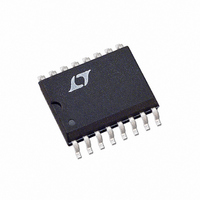LTC1151CSW Linear Technology, LTC1151CSW Datasheet - Page 7

LTC1151CSW
Manufacturer Part Number
LTC1151CSW
Description
IC OPAMP ZERO-DRIFT DUAL 16SOIC
Manufacturer
Linear Technology
Datasheet
1.LTC1151CN8PBF.pdf
(12 pages)
Specifications of LTC1151CSW
Amplifier Type
Chopper (Zero-Drift)
Number Of Circuits
2
Slew Rate
2.5 V/µs
Gain Bandwidth Product
2MHz
Current - Input Bias
15pA
Voltage - Input Offset
0.5µV
Current - Supply
900µA
Voltage - Supply, Single/dual (±)
4.75 V ~ 36 V, ±2.38 V ~ 18 V
Operating Temperature
0°C ~ 70°C
Mounting Type
Surface Mount
Package / Case
16-SOIC (0.300", 7.5mm Width)
Lead Free Status / RoHS Status
Contains lead / RoHS non-compliant
Output Type
-
Current - Output / Channel
-
-3db Bandwidth
-
Other names
LTC1151CS
Available stocks
Company
Part Number
Manufacturer
Quantity
Price
Part Number:
LTC1151CSW
Manufacturer:
LT
Quantity:
20 000
Company:
Part Number:
LTC1151CSW#PBF
Manufacturer:
LTC
Quantity:
200
Company:
Part Number:
LTC1151CSW#PBF
Manufacturer:
LT
Quantity:
309
ACHIEVING PICOAMPERE/MICROVOLT PERFORMANCE
Picoamperes
In order to realize the picoampere level of accuracy of the
LTC1151 proper care must be exercised. Leakage currents
in circuitry external to the amplifier can significantly de-
grade performance. High quality insulation should be used
(e.g., Teflon); cleaning of all insulating surfaces to remove
fluxes and other residues will probably be necessary,
particularly for high temperature performance. Surface
coating may be necessary to provide a moisture barrier in
high humidity environments.
Board leakage can be minimized by encircling the input
connections with a guard ring operated at a potential close
to that of the inputs: in inverting configurations the guard
ring should be tied to ground; in noninverting connections
to the inverting input. Guarding both sides of the printed
circuit board is required. Bulk leakage reduction depends
on the guard ring width.
Microvolts
Thermocouple effects must be considered if the LTC1151’s
ultra low drift is to be fully utilized. Any connection of
dissimilar metals forms a thermoelectric junction produc-
ing an electric potential which varies with temperature
(Seebeck effect). As temperature sensors, thermocouples
exploit this phenomenon to produce useful information. In
low drift amplifier circuits the effect is a primary source of
error.
A
PPLICATI
O
U
S
I FOR ATIO
U
W
U
Connectors, switches, relay contacts, sockets, resistors,
solder, and even copper wire are all candidates for thermal
EMF generation. Junctions of copper wire from different
manufacturers can generate thermal EMFs of 200nV/°C;
four times the maximum drift specification of the LTC1151.
Minimizing thermal EMF-induced errors is possible if
judicious attention is given to circuit board layout and
component selection. It is good practice to minimize the
number of junctions in the amplifier’s input signal path.
Avoid connectors, sockets, switches and relays where
possible. In instances where this is not possible, attempt
to balance the number and type of junctions so that
differential cancellation occurs. Doing this may involve
deliberately introducing junctions to offset unavoidable
junctions.
Figure 1 is an example of the introduction of an unneces-
sary resistor to promote differential thermal balance.
Maintaining compensating junctions in close physical
proximity will keep them at the same temperature and
reduce thermal EMF errors.
When connectors, switches, relays and/or sockets are
necessary they should be selected for low thermal EMF
activity. The same techniques of thermally balancing and
coupling the matching junctions are effective in reducing
the thermal EMF errors of these components.
LTC1151
1151fa
7














